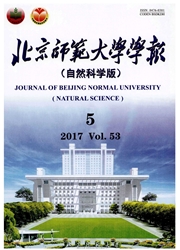

 中文摘要:
中文摘要:
自然界中生物常常面临氮资源限制,它们可能会采用不同的策略来适应.通过比较现存物种的研究认为生物采取的是节约氮的策略,而进化实验的研究发现生物提高了吸收氮资源的能力.这2类研究都有一些方法缺陷,因此本研究设计了一个更系统的进化实验,让大肠杆菌种群在2种氮资源环境中进化1 300代,分析其对不同氮资源环境的适应性进化.1 300代后,2种氮资源环境中进化的大肠杆菌株系适合度均提高,低氮进化株系适合度提升幅度大于高氮进化株系.与祖先相比,低氮株系氮质量分数和DNA质量分数均显著提高,碳、氮质量比显著降低,而高氮株系在RNA质量分数上显著提高.说明在本研究体系中,大肠杆菌采用了增强氮获取能力的策略来适应氮限制,而不是节约氮.
 英文摘要:
英文摘要:
Organisms often face nitrogen limitation in the natural environment and they can adapt to it through different ways. Comparisons of existing taxa suggest that organisms tend to adapt to nitrogen limitation by nitrogen conservation, but evolutionary experiments suggest that increased nitrogen acquisition led to adaptation. These two types of studies have methodological drawbacks. Therefore we designed a more synthetic evolutionary experiment. We used Escherichia coli to evolve in two different nitrogen environments for 1 300 generations and analyzed their adaptation to these environments. After 1 300 generations, the fitness of all evolved lines in the two environments was significantly increased. The lines evolved in low nitrogen environment had more fitness gains than the lines evolved in high nitrogen environment. Compared with their ancestors, the lines evolved in low nitrogen environment showed significantly increased N% and DNA%, but decreased biomass C" N ratio. While lines evolved in high nitrogen environment showed significantly increased RNA%. These data suggest that E. coli adapts to nitrogen limitation by stronger ability to acquire nitrogen but not nitrogen conservation.
 同期刊论文项目
同期刊论文项目
 同项目期刊论文
同项目期刊论文
 Phages limit the evolution of bacterial antibiotic resistance in experimental microcosms. Evolutiona
Phages limit the evolution of bacterial antibiotic resistance in experimental microcosms. Evolutiona Exposure to phages has little impact on the evolution of bacterial antibiotic resistance on drug con
Exposure to phages has little impact on the evolution of bacterial antibiotic resistance on drug con No Evolutionary Shift in the Mating System of North American Ambrosia artemisiifolia (Asteraceae) Fo
No Evolutionary Shift in the Mating System of North American Ambrosia artemisiifolia (Asteraceae) Fo 期刊信息
期刊信息
